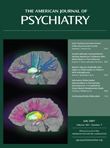In the introduction of his book, Richard D. Chessick tells us that psychoanalysis is in peril of becoming “whatever the psychoanalyst is doing” and losing its anchor in Freud’s work. His book is a plea to return to the writings of Freud, the keystone of the training of the previous generation of psychoanalysts. To Chessick, recent emphasis on phenomenology, self-psychology, object relations theory, and the analyst-patient relationship help the psychoanalyst listen and complement Freud’s approach. However, it is Freud’s topographical and structural theories that remain central, and it is Freud’s emphasis on transference, drives, childhood experience, core unconscious fantasies, repetition compulsion, compromise formation, defenses, and the like that are the profession’s bedrock. Chessick argues that to establish a future for psychoanalysis, psychoanalysts must return to its past while making use of the newer ideas. Kohut, Klein, and Mitchell may complement Freud but do not supersede him.
If psychoanalysis is to have a future, Chessick believes that it must avoid the Scylla of relativism where many points of view regarding analytic technique exist and the Charybdis of absolutism where only one, the classical view, is acceptable. He warns that extreme intersubjectivity where both the analyst’s and the patient’s views bear equal weight can border on nihilism but that the so-called classical psychoanalysis of mid-twentieth century America can rightfully be viewed as absolutism because only the analyst’s view is correct. He goes on to see, through the lens of a Ph.D. philosopher and experienced clinician, that “there is a dangerous fallacy in the extreme intersubjective as well as those hermeneutic viewpoints that assume the centrality of continual co-creation of the data of psychoanalysis” (p. 19). Freud believed in the analyst’s capacity to maintain objectivity toward both the patient and his own countertransference. It is upon this assumption that Chessick places his belief that accumulation of reliable data by many well-trained analysts can yield reliable theories that can position psychoanalysis as a science with a future.
Chessick translates a passage from Plato’s Symposium where the physician Eryximachus describes two kinds of love. He then compares his own translation from the Greek with three others that differ sharply from it and from one another. This leads Chessick to the issues involved in the “translation” of dreams from the manifest to the latent where interpretations can also vary widely, depending on the theoretical stance of the analyst. This point also holds regarding the translation of Freud from German to English where similar variation takes place.
Another chapter centers on phenomenology and the continental philosophers who have contributed most to it. Chessick once assigned Heidegger as reading for a group of psychiatric residents and met with much resistance. Although important to Chessick, Heidegger, Husserl, Merleau-Ponty, Sartre, Boss, and Gadamer may not be the average expectable American psychiatrist’s favorites either. Chessick tries to make their work seem relevant to ours, but really does not succeed. A chapter called “The Secret Life of the Analyst” deals with integrity “burnout,” in which analysts no longer believe in their method of treatment. There is a chapter on Dante, who Chessick feels addressed common problems that psychoanalysts have to deal with today, such as depression, rage, hope, and love.
Chessick considers transference to be Freud’s greatest discovery, and many would agree. The chapter on transference is an excellent overview of the literature that would benefit those nonanalyst psychiatrists who are seriously interested in dynamic psychotherapy. Chessick clearly explains why transference is not just a replication of past object relations and clarifies the role of the compulsion to repeat.
Several times, Chessick mentions “the contemporary subservience of the U.S. psychiatric profession to the wealthy and powerful international pharmaceutical industry” (p. 152) as well as the powerful influence of managed care. These two factors, along with psychoanalytic writers who privilege the patient’s relationship with the analyst over the interpretation of unconscious conflict, are at the heart of Chessick’s fears for the future of psychoanalysis. The three are related because all three weaken psychoanalysis by suggesting that “quick fixes” can replace psychoanalysis. Surely, achievement of insight through interpretation of deeply rooted unconscious conflicts is far from a rapid process. Medication, brief psychotherapy, and highly supportive techniques, in which no interpretation of the therapeutic relationship occurs, are often helpful, yet psychoanalysis is far from obsolete. In the opinion of this reviewer, it should always be considered when the above have not helped and the patient is suitable and practitioners or clinics offering it are available.
Chessick’s background in philosophy allows him to compare the splintering of psychoanalysis in the decades since Freud with the disintegration of Plato’s academy after his death. The mind-brain problem also receives careful attention with a review of contemporary views. His sense that psychoanalysis may succumb to the financial demands of managed care yields to a wishful, elaborate fantasy that it will revive and thrive all over the world in the third millennium because of a renewed interest in human processes. This follows a stimulating digression about creativity. Such is typical of the wide ranging scholarly yet clear writing that makes this a book for the psychiatrist’s library, shelved hopefully somewhere near the well worn writings of Freud.

